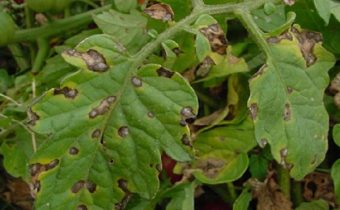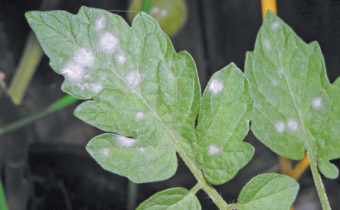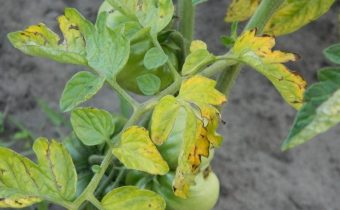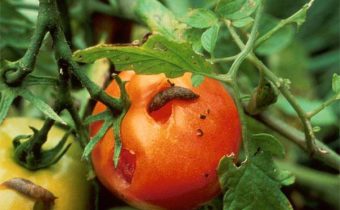How to feed tomatoes after planting in the ground
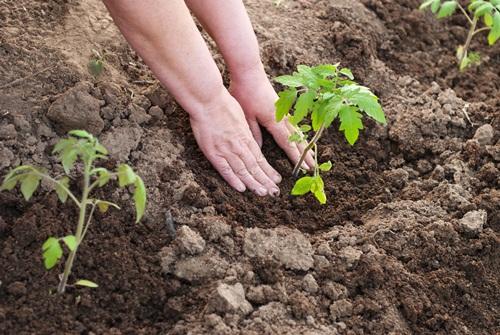
Growing tomatoes requires attention and care for the plants. Tomatoes are particularly sensitive to transplanting to the greenhouse, in addition to the new place, they have to get used to the surrounding temperature. Often, after planting in the greenhouse, the bushes look lifeless and sluggish. To help tomatoes quickly perk and begin to grow, use folk remedies for fertilizing and nutritional supplements. All fertilizers are applied in a certain period of tomato's life, since the need for vitamins varies throughout the entire vegetation cycle.
Fertilizer use procedure
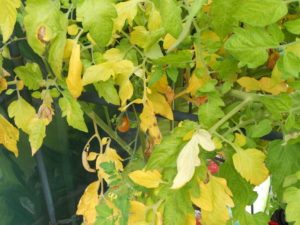 With the transplant of tomatoes, the bush begins to produce new shoots, green leaves. The root system also grows. The basic additive for this period for tomatoes is ammonium nitrate or nitrophoska. With a lack of nitrogen leaves can pigment or turn yellow, dry ahead of time. If the bush looks dull, then it must be fed with nitrogen fertilizer. Dissolve nitrate or nitrophoska (a teaspoon of fertilizer per 10 liters of water) and water the bushes 1 time in 10 days. Repeat processing can be 2-3 times. Nitrogen is well absorbed only in the first phase of tomato growth, before budding. Fertilizers are used from the beginning of May to the end of the month. The first lure is done 2 weeks after landing.
With the transplant of tomatoes, the bush begins to produce new shoots, green leaves. The root system also grows. The basic additive for this period for tomatoes is ammonium nitrate or nitrophoska. With a lack of nitrogen leaves can pigment or turn yellow, dry ahead of time. If the bush looks dull, then it must be fed with nitrogen fertilizer. Dissolve nitrate or nitrophoska (a teaspoon of fertilizer per 10 liters of water) and water the bushes 1 time in 10 days. Repeat processing can be 2-3 times. Nitrogen is well absorbed only in the first phase of tomato growth, before budding. Fertilizers are used from the beginning of May to the end of the month. The first lure is done 2 weeks after landing.
When the bushes of tomatoes have already subsided and began to bloom, potassium supplements in combination with phosphate ones come to the rescue. Both components have a positive effect on educated inflorescences, make the future harvest tasty. Dry application of fertilizers is allowed, but it is better to dilute with water. Potassium sulphate (10 grams) is dissolved in a bucket of water. To him add the same amount of superphosphate and water the tomatoes in the morning from June to July. Supplements are used no more than 1 time in 10 days.
Important!
If the leaves on the tomatoes twist, and their tips turn black - this is a sure lack of potassium. Use an additive to compensate for the lack of metal.
Folk remedies
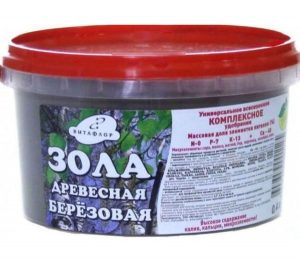 Substances useful for tomatoes are not only found in powder fertilizers, but also in other components. The greatest value for gardeners is ash. It contains a huge amount of mineral elements and other useful compounds:
Substances useful for tomatoes are not only found in powder fertilizers, but also in other components. The greatest value for gardeners is ash. It contains a huge amount of mineral elements and other useful compounds:
- Potassium.
- Calcium.
- Sodium.
- Magnesium.
- Manganese.
- Iron.
- Phosphorus.
All these substances need tomatoes for intensive growth. Ash can be used as root and foliar application. It is often added to the soil during planting. Apply fertilizer should be no earlier than at the beginning of summer. Ash can be watered tomatoes. To do this, a glass of ash is diluted in a bucket of water and watered the culture at least 1 time in 7-10 days during the month. Powder can be applied directly to the leaves and stem. It is crushed by hand or using a rag to dust the shoots of tomatoes. Ash not only compensates for the lack of minerals, but also protects tomatoes from rot, midges and aphids.
Checked additives are mullein and kuryak. Before using fertilizers, they are diluted with water and infused for at least 3-5 days. Cow manure is less concentrated than chicken manure. It is bred in a ratio of 1:10. Chicken droppings It has a stronger effect and is diluted 1:20. Both supplements are used from the beginning of the summer to the end, they affect the taste and increase the juiciness of the tomato pulp.
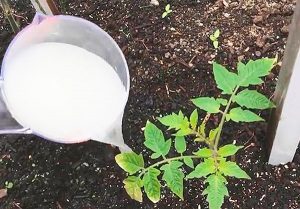 The use of yeast to stimulate the growth of seedlings has become commonplace.Yeast helps to improve the development of roots and leaves, accelerates the formation of fruits and makes them larger. To prepare a watering solution, take the yeast in the package and dilute it in a liter of water. Then, to rise the brew, add a tablespoon of sugar. When the mixture is set for 2-3 hours, it is poured over tomatoes under a bush. Yeast can feed the tomatoes when they are in the flowering phase and the formation of tomato ovaries. Yeast top dressing is carried out no more than three times during the whole growing of tomatoes. Yeast can be replaced by bread crusts or crackers. They are soaked in water, then insist for 3-4 days, the solution is filtered through gauze and watered tomato bushes.
The use of yeast to stimulate the growth of seedlings has become commonplace.Yeast helps to improve the development of roots and leaves, accelerates the formation of fruits and makes them larger. To prepare a watering solution, take the yeast in the package and dilute it in a liter of water. Then, to rise the brew, add a tablespoon of sugar. When the mixture is set for 2-3 hours, it is poured over tomatoes under a bush. Yeast can feed the tomatoes when they are in the flowering phase and the formation of tomato ovaries. Yeast top dressing is carried out no more than three times during the whole growing of tomatoes. Yeast can be replaced by bread crusts or crackers. They are soaked in water, then insist for 3-4 days, the solution is filtered through gauze and watered tomato bushes.
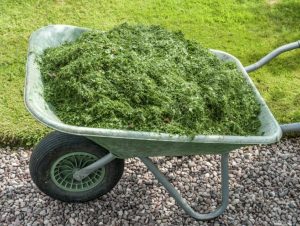 Nettle and any freshly cut grass are very useful for young seedlings. They have a rich composition of trace elements that help tomatoes ripen faster. Watering and irrigation of such an additive, prepared entirely from natural ingredients, can be carried out regularly, beginning in late spring. In the nettle and grass, juice inside the plants is especially appreciated. To extract it, a bucket of nettle or grass is poured with the same volume of water and allowed to stand for a week. You can make the solution more nutritious and add a teaspoon and nitrophosphate or boric acid to 10 liters. The mixture is applied to the leaves of the seedlings, but before noon, so that in the evening the moisture disappeared.
Nettle and any freshly cut grass are very useful for young seedlings. They have a rich composition of trace elements that help tomatoes ripen faster. Watering and irrigation of such an additive, prepared entirely from natural ingredients, can be carried out regularly, beginning in late spring. In the nettle and grass, juice inside the plants is especially appreciated. To extract it, a bucket of nettle or grass is poured with the same volume of water and allowed to stand for a week. You can make the solution more nutritious and add a teaspoon and nitrophosphate or boric acid to 10 liters. The mixture is applied to the leaves of the seedlings, but before noon, so that in the evening the moisture disappeared.
Humus and compost also affect tomato ripening. The components are often added during the formation of the planting ridge, and then used as mulch for further cultivation of tomatoes. Mulch is placed after each watering, even a thin layer. Before the next watering layer is replaced with fresh.
 Prophylactic treatments of tomato bushes with a weak solution of iodine or potassium permanganate prevent infection, kill harmful microorganisms and help the tomato maintain high resistance to pests. Iodine compensates for its deficiency in the stem, and its content in the fruit itself is good for health. Dilute iodine should be no more than 2-3 drops per liter of water. The solution should have an unexpressed color and be slightly tinted. Irrigate with a solution of the leaves and stem of the plant 2-3 times a month. Irrigation can be carried out in May and June. Do not use iodine during flowering.
Prophylactic treatments of tomato bushes with a weak solution of iodine or potassium permanganate prevent infection, kill harmful microorganisms and help the tomato maintain high resistance to pests. Iodine compensates for its deficiency in the stem, and its content in the fruit itself is good for health. Dilute iodine should be no more than 2-3 drops per liter of water. The solution should have an unexpressed color and be slightly tinted. Irrigate with a solution of the leaves and stem of the plant 2-3 times a month. Irrigation can be carried out in May and June. Do not use iodine during flowering.
Potassium permanganate resembles iodine in properties, but is of great value for tomatoes. Since the supplement contains potassium, which is necessary for abundant flowering and good fruiting, the permanganate can be used as an independent fertilizer. It is necessary to plant only a few powder crystals per liter of water, until it reaches a pink color, then the solution is poured into a spray bottle and evenly sprayed over the whole cous, including the leaves. Permanent can be watered tomatoes at the root.
Other types of dressings
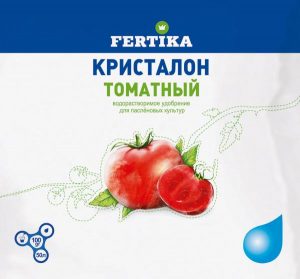 If time is not enough, and tomatoes need feeding, then complex fertilizers will help. They have a balanced composition, which is characterized by versatility of use. These drugs include fertika.
If time is not enough, and tomatoes need feeding, then complex fertilizers will help. They have a balanced composition, which is characterized by versatility of use. These drugs include fertika.
The basis of the fertilizer are potassium, nitrogen, humate, phosphorus. The drug is suitable for weekly irrigation, perfectly soluble in water and even neutralizes the harmful effects of pesticides. Can be used dry. Additive should be diluted in strict accordance with the specified instruction.
Processing tomatoes from insects and diseases can be carried out simultaneously with dressings.
 One of the most popular supplements used by the majority of summer residents was the complex additive Agricola. Agricola for tomatoes does not contain harmful toxic substances such as nitrates and chlorine. It can be used from the beginning of the transplant. All components in the composition of the powder are in the correct dosages. The treatment is repeated after 2 weeks for 2 months.
One of the most popular supplements used by the majority of summer residents was the complex additive Agricola. Agricola for tomatoes does not contain harmful toxic substances such as nitrates and chlorine. It can be used from the beginning of the transplant. All components in the composition of the powder are in the correct dosages. The treatment is repeated after 2 weeks for 2 months.
Often gardeners use their secrets and recipes feeding, which give an excellent result.As a rule, most of the recipes include a whole mix of the fertilizers described above. Cocktail turns out very nutritious and has an intense effect. These recipes are especially suitable for tomatoes that are weak and look sick.
- Recipe 1. Mix diluted chicken manure (25 grams per half liter of liquid) with 20 grams of superphosphate, mix 5 grams of potassium sulphate. Dilute the entire mixture in a bucket filled to the top with water. Watering the crop 2 times a month with this composition is watered; watering in the first months after planting in the greenhouse is particularly positive.
- Recipe 2. Take 20 grams of wood ash, add to it 2 teaspoons of superphosphate and 5-7 crystals of potassium permanganate. All components are dissolved in an aqueous medium. Watering is carried out 2-3 times a month in June-July.
- Recipe 3. 20 grams of potassium humate is dissolved with any complex fertilizer, in which humate is not included. Supplement can irrigate plants, but only in the morning.
The use of fertilizers certainly has a positive effect on the growth of the crop and allows in the process of growing to eliminate most of the problems such as drying and yellowing of leaves, small unsweetened fruits, late ripening. All supplements are used no more than 1 time in 10 days. Between different fertilizers should be a break of at least 2-3 weeks. It is necessary to observe the correct cultivation of substances, regularly loosen the soil and water the land. Timely care of a crop will undoubtedly ensure its good growth and contribute to a bountiful harvest.


